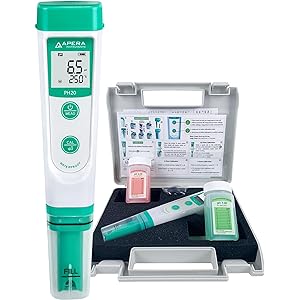Understanding Barleywine Aging Time
Barleywine aging time refers to the duration during which barleywine, a strong ale characterized by its high alcohol content and rich flavors, is allowed to mature in storage. This aging process is crucial as it significantly influences the beer’s overall flavor profile, aroma, and mouthfeel. Typically, barleywines benefit from extended aging, which can range from several months to several years, depending on the desired characteristics and the specific recipe used by the brewer.
The Importance of Aging in Barleywine
Aging barleywine allows for the development of complex flavors that are often not present in freshly brewed beer. During this time, various chemical reactions occur, including oxidation and the breakdown of certain compounds, which can lead to a smoother and more integrated taste. The aging process can also mellow out the initial harshness of the alcohol, allowing the underlying malt sweetness and hop bitterness to shine through more harmoniously.
Factors Influencing Barleywine Aging Time
Several factors can influence the optimal aging time for barleywine. These include the beer’s initial alcohol content, the balance of malt and hops, and the specific ingredients used in the brewing process. Higher alcohol content typically allows for longer aging, as the alcohol acts as a preservative. Additionally, barleywines with a more pronounced malt backbone may benefit from extended aging, while those with a strong hop presence might be best enjoyed fresh to preserve their aromatic qualities.
Optimal Aging Conditions for Barleywine
To achieve the best results during the aging process, it’s essential to store barleywine under optimal conditions. This includes maintaining a consistent temperature, ideally between 50°F and 55°F (10°C to 13°C), and keeping the bottles in a dark environment to prevent light exposure, which can lead to off-flavors. Additionally, storing the bottles upright can help minimize oxidation and maintain the integrity of the beer.
How to Determine When to Drink Aged Barleywine
Determining the right time to drink aged barleywine can be subjective and often depends on personal preference. Some beer enthusiasts prefer the bold, fresh flavors of a younger barleywine, while others enjoy the nuanced complexity that comes with age. Tasting the beer periodically during the aging process can help gauge its development and determine the ideal moment to enjoy it.
Get more content like this!
Sign up to receive updates and new terms first hand.
Common Flavor Changes During Aging
As barleywine ages, its flavor profile undergoes significant changes. Initially, the beer may present strong notes of caramel, toffee, and dark fruit, which can evolve into more complex flavors such as leather, tobacco, and sherry-like characteristics. The hop bitterness may also diminish over time, allowing the malt sweetness to take center stage, resulting in a smoother and more rounded drinking experience.
Comparing Fresh vs. Aged Barleywine
Fresh barleywine often showcases vibrant hop aromas and a pronounced sweetness, making it a delightful choice for those who enjoy bold flavors. In contrast, aged barleywine tends to exhibit a more subdued hop presence, with a greater emphasis on malt-derived flavors and a softer mouthfeel. This contrast highlights the transformative effects of aging and allows beer drinkers to appreciate the versatility of barleywine as it matures.
Popular Barleywine Styles for Aging
Not all barleywines are created equal when it comes to aging potential. Some popular styles that are particularly well-suited for aging include American Barleywine, English Barleywine, and Imperial Barleywine. Each of these styles offers unique flavor profiles and aging characteristics, making them exciting options for those looking to explore the nuances of barleywine aging time.
Experimenting with Barleywine Aging
For those interested in exploring barleywine aging, experimentation is key. Homebrewers and enthusiasts can try aging different batches of barleywine under various conditions to discover their preferred aging times and flavor profiles. Keeping detailed notes on each batch can provide valuable insights into how aging affects the beer, ultimately enhancing the overall brewing and tasting experience.




